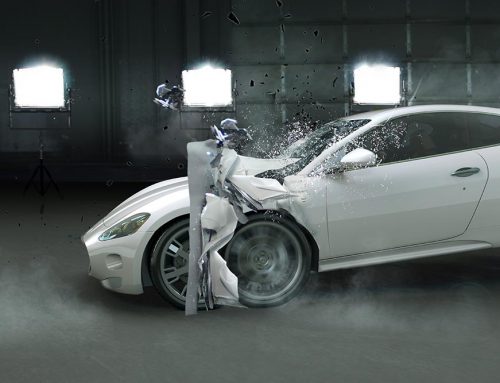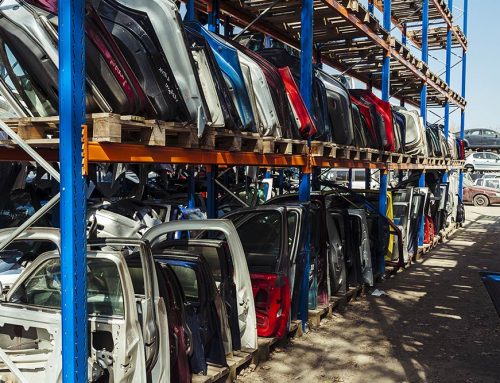A few Tips to Get Through the Crisis.
2021 will have seen a return to the repair levels of 2019. Of course, many entrepreneur collision shops suffered a lot from the travel pause that took place at the height of COVID-19.
Now that we are back to the repair volume of yesteryear (2019), there is a shortage of parts to repair vehicles, and this is happening across the country. Apparently, our fellow European bodybuilders are in the same boat.
If you care about your productivity and profitability, this situation may have compromised both.
For those who must deal with replacement vehicles, costs have exploded. Cycle times have been exceeded. We search around in the hope of finding parts, and we handle repairs in dribs and drabs.
We sometimes must leave our usual processes behind to complete repairs.
In Canada, in the world of OEM parts for a major American brand, a normal year would normally show around 100,000 out of stock lines in the fall. The 2021 fall has over 400,000 empty lines of inventory. It is literally four times higher than usual. Some brands are keeping the status quo while others are struggling to make parts available on the market.
Finding aftermarket or recycled parts is also no easy task. Aftermarket parts are 20% to 30% less available than in the previous years. This trend is not as bad for recycled parts, but it remains an issue.
Many different palliative actions have been noticed. For example, returning a partially repaired vehicle to a customer and calling them back later to finish the repair once the missing parts have been received.
Customer relations are more strained, and sometimes rental vehicles are not even available for customers because the system is under such pressure. There have been situations where customers received a replacement vehicle that was a far cry from their own, and scenarios where replacement vehicles are simply not available.
How are your repair files affected by the parts shortage?
- Weaker customer experience
- Exploding cycle times
- Administrative time waste
- Scarcity of replacement vehicles
- Productivity disruption
- Decreased profitability
What are the solutions for decent productivity and happy customers?
Nowadays, some of you are scrambling to get the parts you want. To help themselves, some even go as far as searching on Amazon.
Lately, the auto parts shortage has changed the job of the shop manager or part person. No one wants to waste money and missing out on part procurement for a few files is enough to significantly affect your financial results. So, people spend long days trying to find solutions.
Here are a few tips to help you find or better manage your BO parts.
Identifying the origin of your BOs
Take a minute and analyze your BOs. Are there suppliers that are statistically more problematic than others? Are there brands that give you more problems than others? By identifying the suppliers or brands that tend to be the source of your supply issue, you may be able to find solutions to reduce the extent of the problem such as varying your suppliers or changing your sales mix.
Varying your sales mix
To perform well in terms of hours sold and produced, you may need to vary your sales mix. Big jobs, requiring more replacement parts, are, of course, at the heart of the BO situation.
To keep your technicians productive and to avoid being too vulnerable to the shortage of replacement vehicles, we proposed you review your sales mix. In addition to serving client insurers, you’ll want to focus on smaller jobs, less affected by BOs, either by accepting work for non-insurance customers or by partnering with fleet owners or dealers for work on used vehicles or for warranty returns. This new habit will pay off even after the parts shortage.
Repairing parts
We normally would not repair parts that are BO, but these days we can afford to do so. We want to move every repair job out of our work in progress as quickly as possible. It’s important to stay as productive as possible.
Obviously, not every insurance file will allow you to do this. By working together with your customers, you will sometimes get the opportunity to repair the part.
Many collision shops do not like to pay subcontractors for repairs, remodeling or rebuilding missing parts, because they do not like the result. Remember that this is better than nothing if it allows you to deliver vehicles without problems.
This option is not recommended for shops that do not have the expertise to repair or refurbish parts.
Working with your car parts brokers
Brokers offer services to solve your BO problems. They can save you precious time and headaches related to your productivity and profitability.
OEM part brokers are currently working hard to expand their team so that they can offer you the best possible service.
In addition, brokers offer BO reports that allow you to get some compensation from your partners for replacement vehicles.
Remember to be patient with them, they are overburdened.
Collaborate with collision shops from different regions
Try to collaborate with your collision shop contacts from other regions. Supply issues are often different between regions. By working with fellow bodybuilders, you may be able to help each other solve problems with a better range of options for accessing part inventories.
Using ProgiParts
ProgiParts is a tool that can help identify your BOs and locate parts on the market.
It also allows you to defer parts purchases for later repair appointments, ensuring that you have the parts when you are ready to start the repair.
Challenge the dealer suppliers, they are often equipped to get BO parts, but don’t have the reflex to do everything the first time to help you.
Conclusion: in a crisis, change is required
In conclusion, in a crisis like COVID-19, we need to change our ways to temporarily adapt. The parts shortage is a smaller crisis, but it probably calls for the entire automotive repair ecosystem to change some of its methods to find win-win processes for shop productivity, customer satisfaction and insurers’ operations. For that, there is no other solution than to talk to one another.
Author: Alexandre Rocheleau
Collaboration: Charles Aubry, Patrick Turcotte, Claude Zalac
Revision: Sophie Larocque
Editing: Émilie Blanchette





